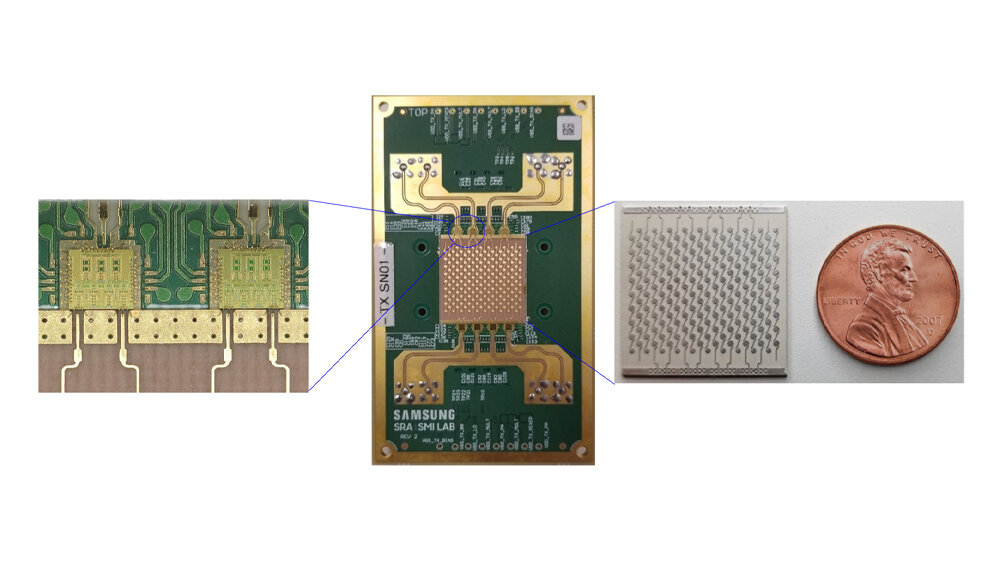Samsung is already researching a successor to the relatively new 5G standard. For 6G, the company presented a white paper last year that also provides for mobile communications in the terahertz frequency range. A first connection with a bandwidth of 2 GHz has now been demonstrated with the University of California, Santa Barbara.
According to projections by Samsung, the 6G standard, which may be used in the first implementations from 2028, should achieve speeds of 1 Tbit/s (125 GB/s) and work with latencies of 0.1 ms, which is only a tenth of 5G. One possible candidate for achieving these goals is the use of the terahertz frequency range. Samsung assumes that 6G will be used in the entire frequency range currently used by 4G and 5G and beyond that up to 3,000 GHz. Only bandwidths of several hundred gigahertz per carrier would make speeds in the range of 1 Tbit/s possible with the new terahertz spectrum.
2 GHz Bandwidth for 6.2 Gbit/s
Together with the University of California, Santa Barbara (UCSB), Samsung has now demonstrated a first terahertz connection as part of the IEEE International Conference on Communications (ICC 2021). An end-to-end connection was established in the frequency range at 140 GHz using fully digital beamforming.
The end-to-end prototype used a phased array transmitter and receiver with 16 channels and a 128 element antenna array and was connected to a baseband unit that can process signals with 2 GHz bandwidth and the beamforming used. In a first “proof of concept” over-the-air test, a speed of 6.2 Gbit/s was achieved in the terahertz spectrum at 140 GHz over a distance of 15 m.

Samsung and UCSB want to continue to cooperate
The transmitter and receiver for the 140 GHz spectrum were first developed in 2017 by a research group within UCSB headed by Electrical and Computer Engineering Professor Mark Rodwell. The development was part of a sponsored program from the US National Science Foundation (NSF). “We bring our knowledge of advanced mmWave technologies in the THz spectrum above 100 GHz, while Samsung provides expertise in wireless systems and cellular networks,” said Rodwell. The cooperation between Samsung and UCSB is to be continued in order to make 6G and THz communication a reality one day.
 Professor Mark Rodwell, University of California, Santa Barbara (UCSB) (Image: Samsung)
Professor Mark Rodwell, University of California, Santa Barbara (UCSB) (Image: Samsung) Samsung had already stated last year that the terahertz frequency range places enormous demands on antennas and the environment, as huge MIMO antennas have to be used that establish connections on the line of sight and that are extremely sensitive to weather conditions, for example. Atmospheric absorption, for example, is a problem, rain and even oxygen are hurdles.
Are the hologram projections coming?
According to Samsung, there is a huge spectrum available in the terahertz band, which enables two-digit GHz channel widths. The company expects top speeds that are 50 times faster than 5G and could only have a tenth of the latency. One area of application could be mobile hologram projections, which Samsung already mentioned in last year's 6G whitepaper.
A hologram with 11.1 gigapixels emanating from a 6.7-inch display would already need 0.58 Tbit/s, Samsung explained last year. If, on the other hand, a human-sized hologram is to be generated, this could require several Tbit/s. The aim of hologram technology is to create digital replicas of people and objects that can be interacted with. In order to duplicate a 1 × 1 meter area, a resolution in the range of 1 terapixel is required, according to Samsung, which requires 0.8 Tbit/s even with strong compression.

